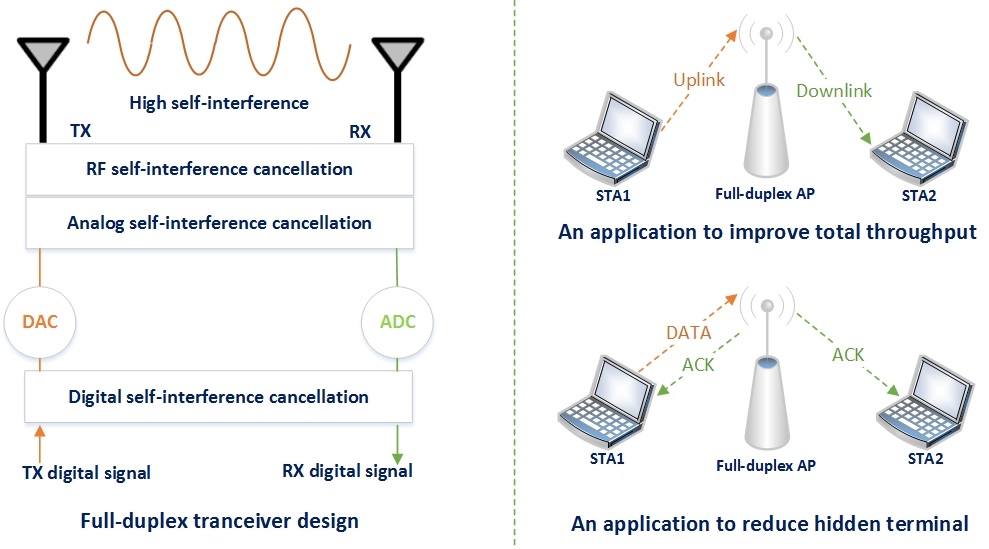|

Overview:
One of the basic rules in wireless communication is that it has to be half-duplex, in other words, wireless devices can perform either receiving or sending at one time in the same frequency band. The major challenge in realizing single-channel full-duplex wireless communication lies in the fact that an overwhelming portion of the receiving signal is the self-interference signal, making our interested signal hard to obtain. Recently, various cancellation techniques have been proposed to cancel the self-interference signal, which has made full-duplex wireless communication possible. Full-Duplex Wireless Communication has the potential to reform the wireless communication in many aspects and it is really an exciting area for both academia and industry.
People: Aimin Tang, Pengfei Huang, Huaiyu Huang
Papers:
A. Tang, and X. Wang, "Medium Access Control for a Wireless LAN with a Full Duplex AP and Half Duplex Stations," in IEEE GLOBECOM 2014.
X. Wang, A. Tang and P. Huang, “Full Duplex Random Access for Multi-User OFDMA Communication Systems,” Ad Hoc Networks, Volume 24, Part A, Pages 200–213. January 2015.
A. Tang and X. Wang, “Balanced RF-Circuit Based Self-Interference Cancellation for Full Duplex Communications,” Ad Hoc Networks, Volume 24, Part A, Pages 214–227. January 2015.
A. Tang and X. Wang, “A-Duplex: Medium Access Control for Efficient Coexistence between Full Duplex and Half Duplex Communications,” IEEE Transactions on Wireless Communications, to appear.
|